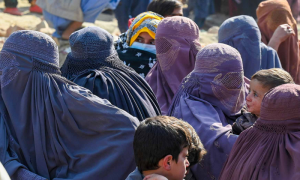TEHRAN: Iran’s southeastern Sistan-Baluchistan province has been hit by a series of dust storms resulting in at least three casualties and more than 1,300 individuals seeking medical assistance, according to state media reports.
Dust storms have been increasingly prevalent in Iran’s southern regions, a phenomenon that experts attribute to the rapid depletion of wetlands and water sources, leading to heightened regional water disputes.
Majid Mohebi, the province’s crisis management chief, reported that three people had “died in accidents caused by reduced visibility” during this week’s dust storms. Over the past three days, “1,346 people… have sought medical assistance from hospitals and medical centres,” Mohebi stated. The affected individuals reside in five neighboring towns in Sistan-Baluchistan, near the Afghan border.
Respiratory, heart, and eye conditions were the most commonly reported health issues, Mohebi added. A forecast from the regional meteorological center indicated that strong winds and dust storms were likely to persist for several days. The intensification and frequency of dust and sandstorms have been attributed to factors such as overgrazing, deforestation, and excessive use of river water.
Climate Change Impact in Iran
A notable water-related tension exists between Iran and Afghanistan, primarily stemming from diminished water flow in the Helmand River, which both nations share.
Iran alleges that an upstream dam constructed by Afghanistan restricts the river’s flow into a border-straddling lake, while Afghanistan has attributed the decline in river volumes to climatic factors.
Sistan-Baluchistan, which experienced a severe heatwave in late July and early August, has long contended with water scarcity. Last month, the IRNA news agency reported that nearly 1,000 individuals had received hospital treatment over several days due to rising temperatures and dust storms.
Iran, with a population exceeding 85 million, ranks among the countries most susceptible to the impacts of climate change and global temperature increases. The nation has also grappled with recurring droughts and periodic flooding, which are exacerbated when torrential rains occur on parched terrain.
























